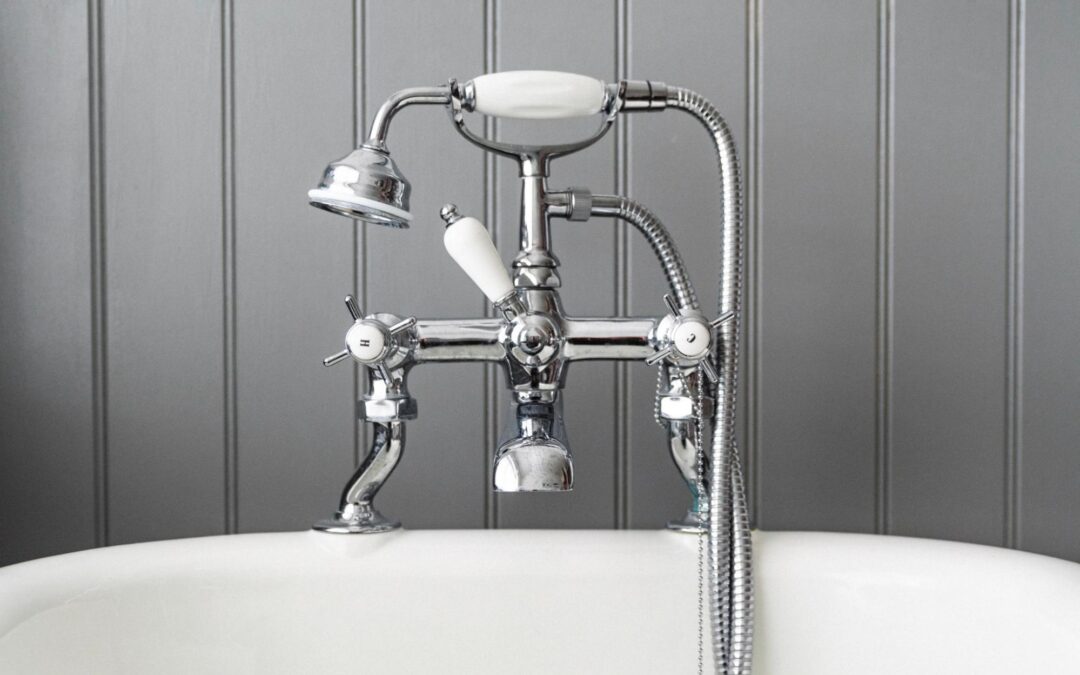We’ve all had those chilly winter mornings where the thought of a warm shower seems like the perfect start to the day. But imagine you’re jolted awake by a rush of scalding hot water instead. This uncomfortable experience, familiar to some, underscores the significance of an unsung hero in our plumbing systems – the tempering valve.
What Is a Tempering Valve?
The tempering valve ensures that the water streaming from your home’s showers, faucets, and other outlets is at a safe and comfortable temperature.
For anyone who has experienced a sudden burst of hot water in the middle of a soothing bath or while washing dishes, you can attest to the discomfort and potential danger posed by water that’s too hot.
While the technology behind a tempering valve may not be as attention-grabbing as the latest smartphone or gadget, its role in our everyday lives is undeniable. It quietly ensures that our morning showers, children’s baths, or even the water we use to clean our dishes are all at a safe and comfortable temperature.
A tempering valve isn’t merely a luxury or an option – it’s a matter of safety, comfort, and efficiency. It’s about safeguarding your home against accidental burns, ensuring a more enjoyable experience in your daily routines, and saving water by eliminating the need for constant manual adjustments from a high to a lower temperature and vice versa.
Types of Tempering Valves
Mixing Valve
A mixing valve is a three-way valve that blends hot and cold water to achieve the desired output temperature.
These valves are commonly used in water heating applications to regulate the water temperature and provide consistently tempered hot water to your home. The tempering valve receives hot water from the water heater and cold water from the main supply, combining them in the valve body to produce a balanced output of tempered water.
Various types of mixing valves are available in the market, each with distinctive features and functionalities. However, their primary function remains the same: maintaining a stable output temperature and reducing the risk of scalding incidents.
Thermostatic Mixing Valve
A more advanced type of mixing valve is the thermostatic mixing valve (TMV). The TMV uses a temperature-sensitive element to precisely control the hot and cold water mix ratio.
These valves constantly adjust the flow rates of hot and cold water, responding to changes in the supply temperature to deliver a consistent output temperature.
Thermostatic mixing valves are particularly useful in applications where maintaining a constant water temperature is crucial for safety, such as hospitals or aged care facilities.
Benefits of a Tempering Valve
Safety from Scalding
The biggest benefit of a tempering valve is its safety feature. The tempering valve maintains a consistent temperature by adeptly mixing hot water with cold, eliminating the fear of scalding or freezing.
Due to its role in preventing accidental burns, the tempering valve is hugely effective in avoiding scalding.
Boosting Energy Efficiency
Beyond safety, the tempering valve significantly contributes to energy efficiency. These valves reduce the energy required to sustain the desired heat by preserving water at a set temperature.
This efficiency not only conserves energy but also manifests in lower utility bills.
Preservation of the Hot Water System
The tempering valve also extends protection to your entire hot water system. By controlling the water temperature, these valves can avert damages instigated by extremely high temperatures, such as overheating or the gradual wear and tear on your pipes and fixtures.
This preventative measure translates into a longer lifespan for your hot water system, reducing the likelihood of frequent maintenance issues
Applications and Regulations
The tempering valve plays an essential role in both residential and commercial applications. They are particularly important in settings where vulnerable individuals are at risk, such as secondary schools and nursing homes.
In these environments, a tempering valve helps prevent scalding from hot water by mixing it with cold water to distribute a safer temperature.
Here are a few facts worth considering:
- In Australia, the tempering valve has become part of regulations defined by the Plumbing Code of Australia to increase safety and prevent potential injuries. These regulations ensure that an installed tempering valve provides a consistent water temperature output, typically accurate to about 3°C +/-.
- The thermostat in your hot water system tank must be set at 60°C or above to prevent harmful bacteria growth such as Legionella bacteria. By maintaining this temperature, you also comply with valve regulations while ensuring that hot water is stored safely for residential and commercial use.
- One thing to remember is that a tempering valve generally has a shorter lifespan than TMVs (Thermostatic Mixing Valves) and is usually replaced instead of repaired when needed. However, both valves play a crucial role in protecting users from scalding and ensuring water temperature remains within a safe range for usage.
Key Takeaways
Replacing your hot water system is an investment in your home’s efficiency and comfort. By selecting the right type and size of the system, ensuring professional installation, and adhering to local codes and regulations, you can enjoy a reliable and cost-effective hot water system for years to come.
If you’re ready to make the move, contact Canberra Plumbing & Drains for top-notch hot services from a licensed plumber, catered to your specific needs.


Recent Comments